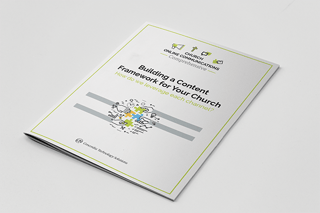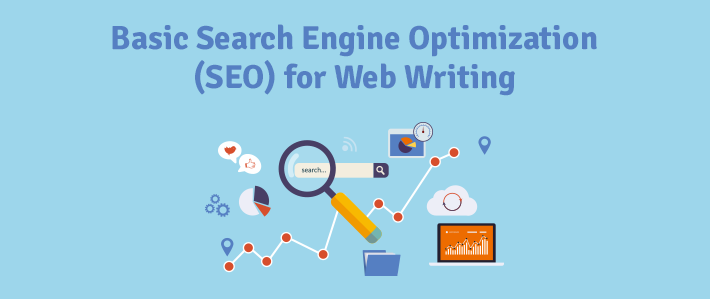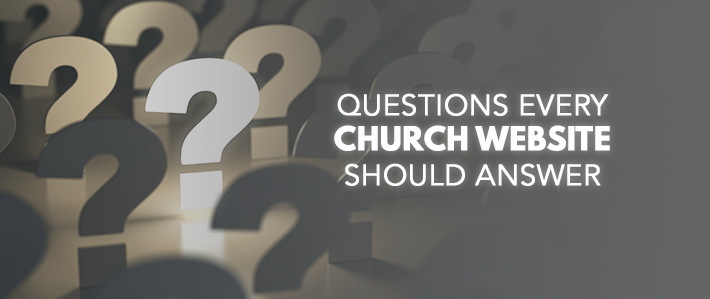
This session will start to get into the hands-on aspects of communication. We’ll dig more into the nitty-gritty of what church communication consists of and how to successfully communicate with your audience. We’ll do this by talking about a content framework.
I've discussed the concept of having a content framework in a previous blog post, as well as in a live presentation just a few weeks ago. This is such an important concept in online communications that it's worth exploring in a bit more detail.
What is a content framework?
A content framework is an organized manner of distributing content across the communication channels of your church to lead audiences through your defined journey map. In other words, it is your strategy for sharing content with your audience.
There are a few key terms listed in that definition that should be defined themselves. Content, you might remember from the previous session, is the value that you’re sharing: text, videos, or any other message. A channel is the place you’re sharing that content: social media, emails, your website, etc. Your content framework is the way you choose what content to share on each channel.
This idea for content framework came from Chris Brogan, a keynote speaker at a conference I attended. He mentioned content framework as almost a side note, but it really caught my attention. As I took his idea and began to apply it to our online communications here at CTS, I learned just how valuable it could be for giving each channel a purpose.
The phases of content framework
A content framework consists of three phases: outposts, media empire, and home base. Let’s start with outposts.
The outposts of your communication are the places you have conversations with your audiences. These are short-format, two-way conversations. This may include your social media pages, your organic or paid search presence, and even paid ads on social media. These are the places where you can talk to your audience and learn from them: what they’re interested in, looking at, and searching for. Outpost are two-way dialogues (your audience asking questions and receiving answers) even when you are not an active participant.
Your media empire is the place where your audience receives a correspondence. These are the longer-format and one-way conversations. This used to mostly be through bulletins, but it’s grown into YouTube videos, blogs, or emails. Your church's media empire is the hub for all of your information and content.
The best way to build up your media empire is to take your content, build on it, and repurpose it. You can take a sermon, expand on it and get into deeper detail, and turn it into a blog post for your readers. You can create a promotional video for YouTube about Vacation Bible School featuring interviews of attendees and volunteers. Any item that captures your audience's attention for an extended period of time can go in your media empire.
Lastly, your church has a home base, usually your church website. This is where the conversions happen. You’re not converting them as in an altar-call conversion (that work is done through the Holy Spirit), but rather it is a conversion onto the next step of your journey map.
Through your church website, you have complete control over the environment. The only information viewers will see is the content you want them to see. You won’t be competing with family or funny cats like you are on social media. Everything on your website is content that you own. In the home base stage, you are directing your audience to the final stage and drawing them closer to you.
What are the benefits of a content framework?
The thing I really like about having a content framework is that it emphasizes movement. It moves your audience from disconnectedness to connectedness in your church. By using and following a content framework, your audience can easily flow from one stage to the next, continually moving closer to your end goal.
Having a content framework also downplays the importance of any one channel. This is especially important because social media is continually evolving. Who would ever have guessed a few years ago that churches would be using Snapchat? But they are, and content framework helps churches move with the evolution of social media. It gives each channel a specific purpose and gives each message a clear call-to-action and a logical next step.
How do you use a content framework?
To set up your content framework, you have to start at the end. Define your end goal and then work backwards. What do you want your audience members to accomplish? Where do you want them to finish? You should have already done this with your church goals and journey map, but if you haven't, now is the time to start.
Establish the conversion points on your website. If the final steps occur in person (like attend worship or Bible study), use your website to encourage your members to commit to attending through a signup.
Once you have the end goal and conversions set up, establish the desired movements of your audience. This is where your calls-to-action come into play. How do you want your members to move, where do you want them to move, and how will you get them to move? Again, refer back to your journey map and content map, looking at the appropriate messages that have been contextualized for your audience.
Make sure your long-format content has a strong next action at its very end. Your goal is to move your audience towards a conversion, so if the journey ends at your great long-format content, you've missed an opportunity. Ask them to take that next step.
Finally, split your long-format content into smaller, bite-size pieces of information that you can share on your social media. Point each of these recipients back to your media empire.
Getting started
As I'm sure you've realized, you will need to create enough appropriate content to satisfy each stage. How will you keep your audience engaged and interested in your content? This is where your content map, which we covered in last week's post, helps you make sure the content you’re sending is appropriate and engaging for your audience.
One final note: make sure you don’t send your audience backwards. A common mistake is to send a visitor from your website to your social media pages. This is just asking them to get distracted by videos of talking dogs. Make sure you’re always sending them forward, from the outpost, to the media empire, to the home base, always ending at your website.

Start Building Your Framework
Download the Building a Content Framework for Your Church. Start planning strategies for sharing content with your audiences by using this free PDF. The template provides an example as well as a blank framework for you to use.

Free Training Course
This blog post was part of the training series Church Online Communications Comprehensive. All the course materials are available online for free, and you can move through the course at your own pace. Start working toward an effective online communications strategy for your church today!






